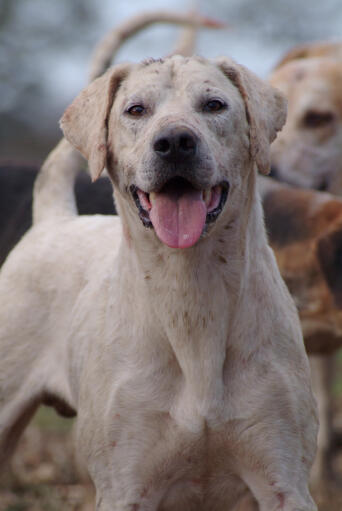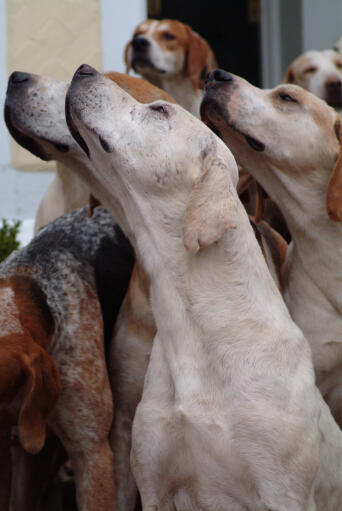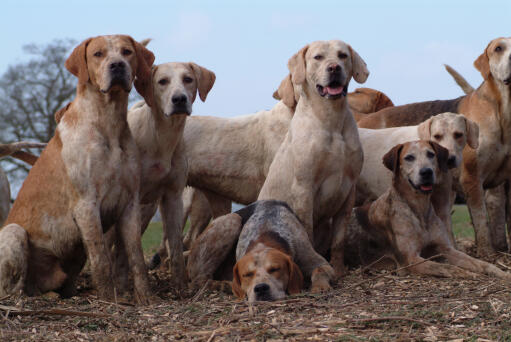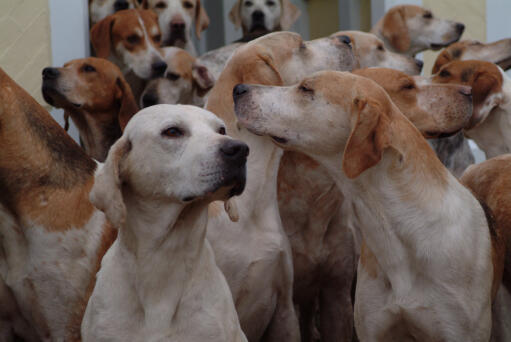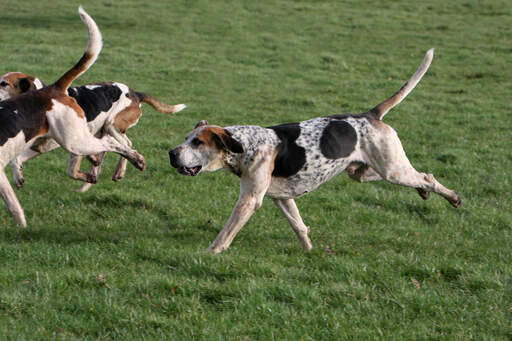Foxhound (English) Dogs







History
The English Foxhound has been around for a few hundred years, but it's exact origin is unknown. Possibly a cross between the Fox Terrier and Greyhound. In the 1750's they were bred to accompany hunters on horseback and locate and chase down foxes. By the late 1800's, well over 100 packs (around 50 dogs per pack) were registered in England. Even though fox hunting in now illegal in Britain, mock hunting is still practised using English Foxhounds. They are becoming more popular in the show ring and as pets but are still mainly seem out on fox hunts.
Behaviour
The Foxhound is an active dog and can literally run and run for miles. They are good within a family, with other pets and horses but need either human or canine companionship to be happy. They were bred to live in a pack and living with family group will fulfil this role. Generally good with other dogs if socialised from an early age, they like to play and form close bonds with other dogs/people in the family. Being a scent hound, they will dash of at the slightest chance if they smell something. They have an incredible sense of smell and are able to track over several miles. Recall is tricky with this breed as they want to run, so best walked in a secure area or on a lead. They make great jogging partners and will out run you. English Foxhounds are a gentle, calm and sociable breed, but can be slightly wary of strangers at first. They are good with children and are tolerant of most situations. They need firm, yet loving, training from an early age to achieve a well rounded dog. They can be stubborn to train, but will learn eventually. They are good at agility and flyball-type competitions and this really helps to use up some of their energy. They need very long walks every day and preferably a chance to run around off lead, but for reasons mentioned above, this needs to be in a safe area. Once they are running free, you don't stand much of a chance of catching them. At home, they will gladly sleep off their run, but are ready to go at a moments notice. You will struggle to tire them out completely. Two types exist, the show type and field type.
The latter is slightly more energetic. The English Foxhound doesn't bark very often, but bays when it has picked up a scent of is excited. Grooming is minimal, but a weekly brush should do. There are no major health concerns for this breed, they are generally very healthy. Canine Hip Dysplasia is occasionally seen.
Temperament
English Foxhounds have a gentle and family orientated temperament. Bred as a pack hound they will need companionship in their lives and will hate being alone. This can be in the form of a pack of dogs or fitting into his new human family pack.
Good with children and other animals this tolerant breed will become devoted to his family. Bred to chase Foxes for miles and miles this dog has heaps of stamina. This means it needs huge amounts of exercise everyday to be content. You will struggle to tire this dog out and he will be happy to go out for a walk at a moments notice.
Health Problems
Health problems that may affect English Foxhounds include canine hip dysplasia (CHD), kidney disease and epilepsy.
Breed Details
- Status: Common
- Life Expectancy: 10 - 13 years
- Weight: 29 - 34 kg
- Height: 23 - 27"
- Rare: No
- Coat: Short
- Grooming Requirements: Once a week
- Town or Country: Country
- Minimum Home Size: Large House
- Minimum Garden Size: Large Garden
- Breed Type: Hound
- Size: Large
- Energy Level: High
- Exercise Required: Over 2 hours
Foxhound (English) Pictures


